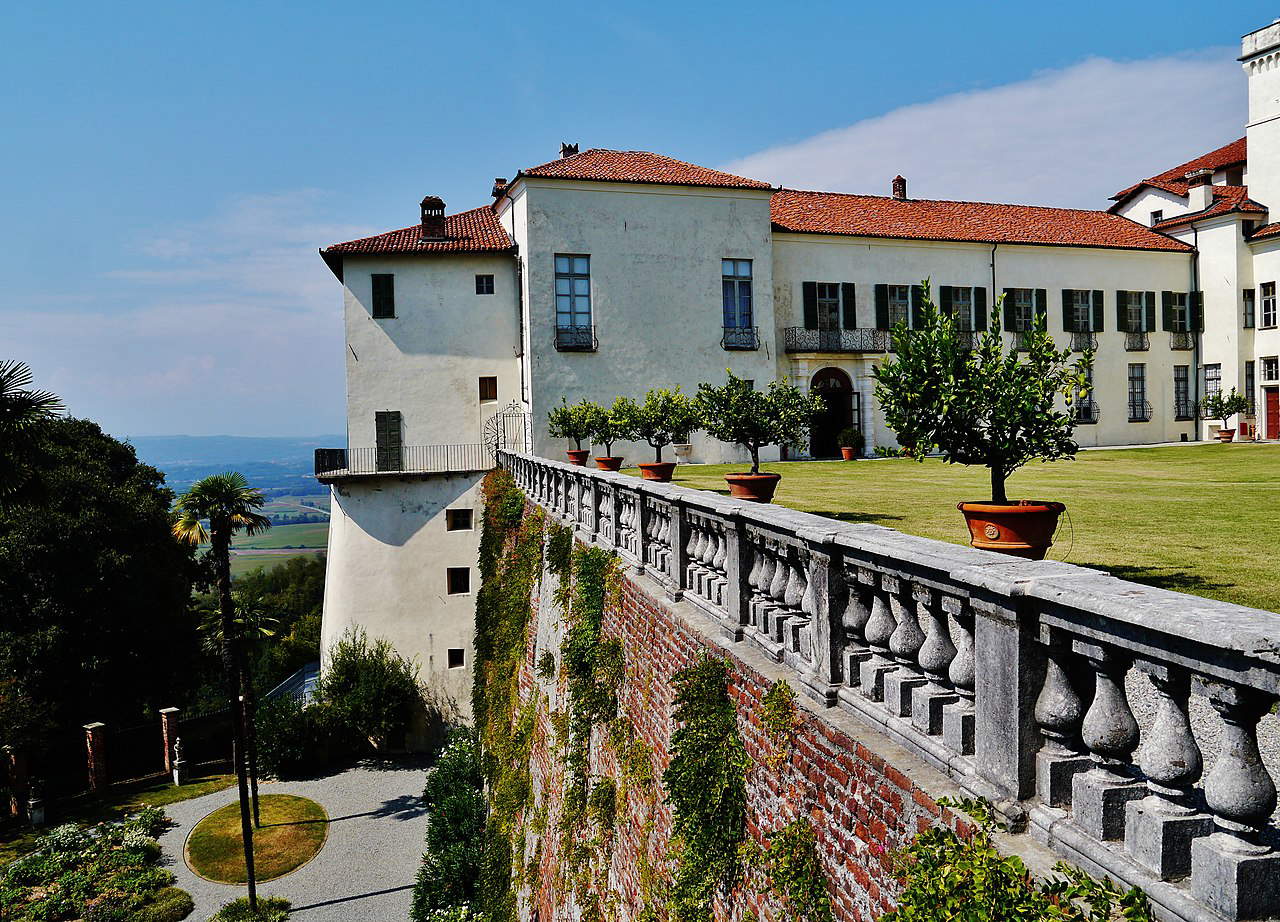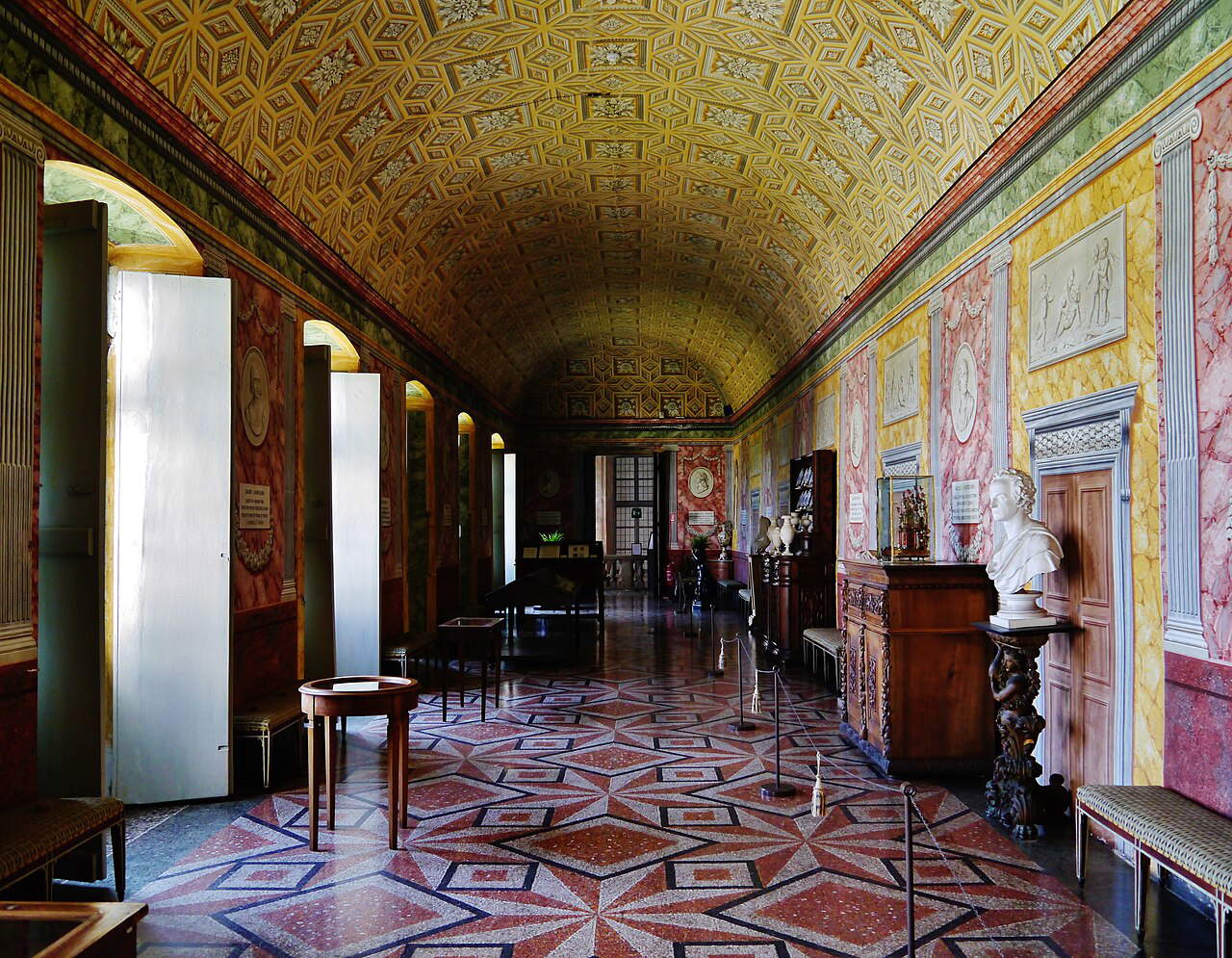In the heart of the Caravino area, about 55 kilometers from Turin, stands the majestic Masino Castle together with its enchanting park, witness to more than ten centuries of family history of the noble Counts Valperga. Originally erected in the 11th century as a defensive fortress, the castle underwent an evolution that transformed it from a military stronghold to a country residence. Precisely by virtue of its original function, it is strategically located on the moraine hill from which it witnessed numerous conflicts between the rival factions of the Savoys, the Achaias, the Viscontis and the Valperga themselves eager to secure control of these prestigious lands. But it was only with the arrival of the Renaissance that the castle, situated on a rise facing the moraine barrier of the Serra di Ivrea, experienced an aesthetic change, transforming itself into a stately and holiday residence surrounded by magnificent gardens in place of the ancient fortifications.
Within its walls, it is possible to admire a rich artistic heritage, including 17th- and 18th-century frescoes, fine period furnishings, and the rooms of the ambassadors and the Madama Reale. The magniloquence of the castle is told through its sumptuous frescoed and elegantly furnished halls, the rooms designated for ambassadors, private apartments, rich salons and terraces the panoramic views that offer a view of the valley that seems, at that moment, to be the whole world. The interiors reflect the elegance and sophistication of eighteenth-century culture, manifesting an unwavering commitment to the celebration of knowledge. The castle’s library, in fact, is a treasure that is still considered priceless and holds more than 25,000 ancient volumes that testify to the deep erudition and passion for knowledge of the Valperga di Masino family. It is a place, this, that has also witnessed the passage of great personalities in history such as Cristina Trivulzio Belgioioso to whom a room is now dedicated with furniture, paintings, books and documents that have come to the collections as a legacy. In 1860, Cristina drafted a treatise entitled Della presente condizione delle donne e del loro avvenire (Of the present condition of women and their future), where she expresses a profound reflection on the fate of women and their future. In her words, there emerges a keen sensitivity to the suffering and injustices suffered by women of the past, calling on the women of her time not to forget the toll of pain and humiliation paid by those who had preceded them in history. She urged them to gratefully acknowledge the pioneers who had paved the way to a happiness never before experienced, if not only faintly imagined.




The flowing, elegant, story-soaked lines of Masino Castle blend, proceeding silently outward to a small, orthogonal, crescent-shaped labyrinth. Little is known about its actual construction, which appears to date from approximately the 17th century. However, since 1753, traces of it have been lost because Count Charles Francis II of Valperga decided to brutally dismantle it in order to build, in its place, a horse stables. During this period, in fact, a fundamental importance is played by the figure of the illustrators of noble residences who first handed down, through engravings, the most important architecture of the time. Alongside the plans of the buildings, we find representations of the gardens and a complete mapping of the labyrinths of the time, as if outlining a compendium that constitutes the authentic snapshot of the Italian labyrinthine heritage between the seventeenth and eighteenth centuries. Written records described the Masino labyrinth as a vast terrain that had over two thousand hornbeam trees, skillfully and precisely shaped. And it is from here that its reconstruction has started since 1988, when FAI - Fondo Ambiente Italiano acquired the site.


Exploring the Labyrinth of Masino Castle is like entering a world of puzzles and intrigue, a perfectly symmetrical double-entry plant ’puzzle’ where only at the last step, as you are ready to reach the coveted center, will you find yourself lost and it will be all too easy to lose your way and get confused. The size of the maze, one of the largest in Italy, allows the dense geometries of the flowerbeds to deceive the eye of the wayfarer as he, too, mingles with the natural element around him.
During the eighteenth century, it was indeed of primary importance to bewilder the unfortunate traveler who was faced with this short journey in a small geometric pattern, simple only in appearance. Gaining strength and vigor during this period was the playful vocation that was considered most important in the late sixteenth century, becoming places of entertainment and courtship. They were secluded places where one could play, romance and embark on real journeys of discovery of the unknown. An unknown that, in this case, to arrive at the shy turret that gives an incredible view of the small world just probed.
 |
| The labyrinth of Masino Castle, an intricate eighteenth-century maze |
Warning: the translation into English of the original Italian article was created using automatic tools. We undertake to review all articles, but we do not guarantee the total absence of inaccuracies in the translation due to the program. You can find the original by clicking on the ITA button. If you find any mistake,please contact us.